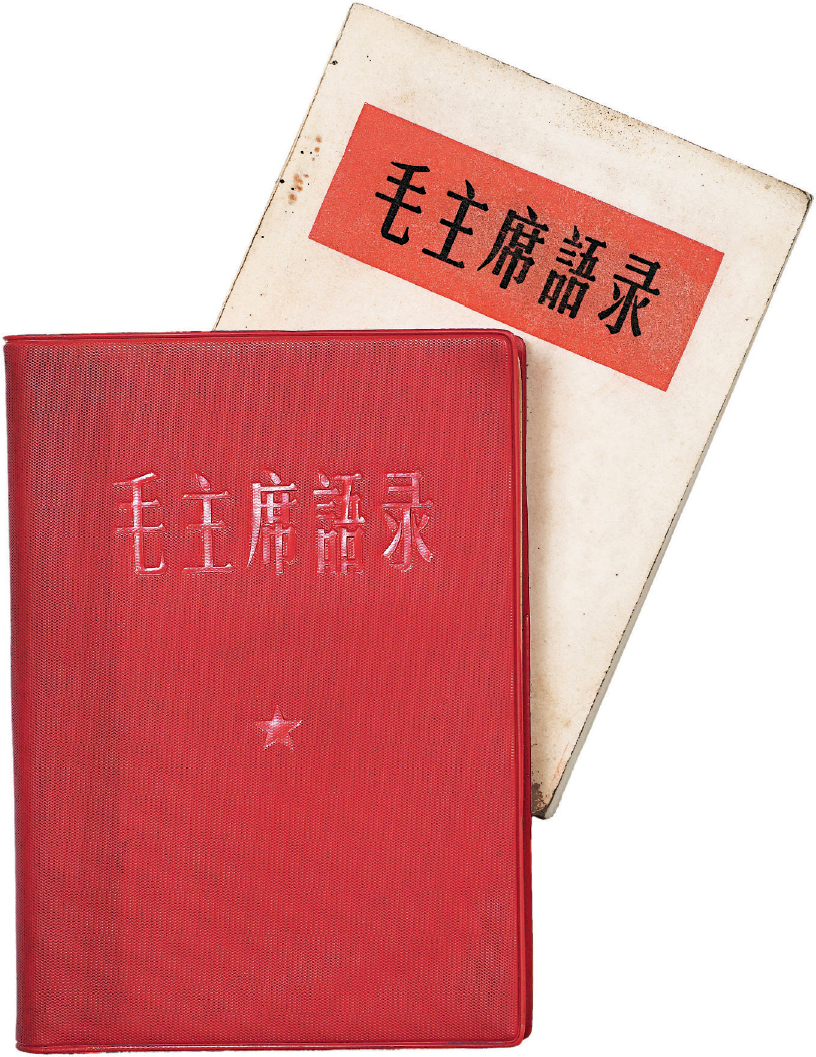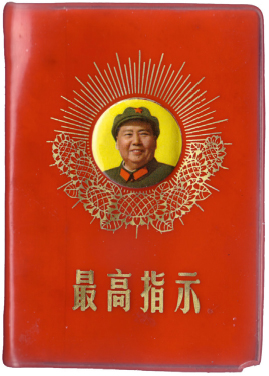Quotations from Chairman Mao Tse-tung
(1964)
At its height, Quotations from Chairman Mao Tse-tung was the most widely printed book in the world. Mao’s ‘Little Red Book’ became almost accidentally a sacred text as the cult of his personality gripped the Chinese nation. It fell from favour after Mao’s death but remains highly quotable in both the East and West.
Quotations from Chairman Mao began life, like so many books, as a newspaper column, a motivational ‘thought for the day’ in the People’s Liberation Army Daily in the early 1960s. Two hundred ‘thoughts’ were compiled in a small book for those attending a conference in the first days of 1964. After a series of revisions and expansions, the final version contained 427 quotations from Mao Tse-tung (1893–1976), chairman of the Communist Party of China (CPC) and the country’s guiding revolutionary light since 1949, when he proclaimed the People’s Republic.
Topics ranged from the Communist Party (‘We must have faith in the masses and we must have faith in the Party’) to ‘education’ (‘Our attitude towards ourselves should be “to be insatiable in learning” and towards others “to be tireless in teaching”’), via ‘arduous struggle’, ‘self-criticism’ and twenty-nine other headings. The book was originally intended to bolster the resolve of the People’s Liberation Army (PLA), on whom Mao had relied heavily to suppress dissent during his disastrous Great Leap Forward drive towards industrialisation in the 1950s.
In 1965, anticipating the launch of the Cultural Revolution the following year, Mao began to distribute the book to all non-military Chinese too. It was a fantastically ambitious programme; the population at the time was in the region of 740 million. The Chinese print industry was stretched to the limit and faced frequent shortages of paper and ink. It became known in the West as the ‘Little Red Book’ because the most common edition, designed to fit into a soldier’s pocket, was small with a red vinyl cover.
As the book spread in availability, it became at first popular, then advisable, then compulsory to know its contents well. Quotations were painted onto banners, walls and cliffs, and cited at every opportunity in casual conversation and official documents. The book became an icon, held aloft by chanting guards or clutched in propaganda posters by Chinese children. It is impossible to get an accurate figure of the numbers printed, but estimates range from two to six billion, far more than the population of China alone, in nearly forty languages.
The book’s power as the sole source of political truth in the country is impossible to overstate. In the radical 1960s, it was also taken up by alternative cultures in the West. But following Mao’s death in 1976, the practice of quoting from it began to fall into disuse.
Mao’s achievements in modernising his country cannot be ignored, and it is no small irony that quotations from his Little Red Book have been used by the capitalist West in manuals for business success. Although China’s politics have softened over the decades, there are still many Maoists within the CPC. A new expanded edition of Quotations of Chairman Mao Tse-tung was published in 2014 on the fiftieth anniversary of its launch. Some commentators believe it was something of a weather balloon to test the conditions for a return to a stricter regime. But perhaps, with China’s economy booming, Mao’s work is done.

The interior and red vinyl cover of an original 1964 edition. The embossed red star, a common symbol of Communism, is said to represent the five fingers of the worker’s hand or the five social groups (workers, youth, peasants, military and academics).

Later editions include the now-iconic portrait of Mao.

